Introduction
In today’s rapidly evolving business landscape, staying ahead means embracing innovative technologies that can streamline operations and maximize efficiency. Robotic Process Automation (RPA) is at the forefront of this revolution, offering a powerful solution to automate repetitive, rule-based tasks traditionally handled by humans. This article delves into the transformative impact of RPA, exploring its definition, key benefits, diverse applications across industries, and the challenges it presents.
Furthermore, it sheds light on future trends, particularly the integration of RPA with artificial intelligence and machine learning, which promises to drive even greater advancements in business process automation. By understanding and leveraging these insights, organizations can harness the full potential of RPA to enhance productivity, reduce costs, and foster a culture of continuous improvement.
What is RPA?
Robotic Process Automation (RPA) leverages software ‘bots’ to automate repetitive, rule-based tasks traditionally performed by humans. These bots replicate human interactions with digital systems to streamline operations, reduce errors, and boost productivity. For instance, Surrey County Council, which serves 1.2 million residents, has adopted RPA to enhance its service delivery across various sectors including transport and social care. By automating data entry, invoice processing, and customer service inquiries, organizations can focus on more strategic initiatives. As a prominent Custom Software Development Company, Coding Crafts highlights that RPA is not a ‘set it and forget it’ technology; continuous monitoring and management are essential to achieve stable and efficient processes, reflecting the evolving landscape of intelligent systems.
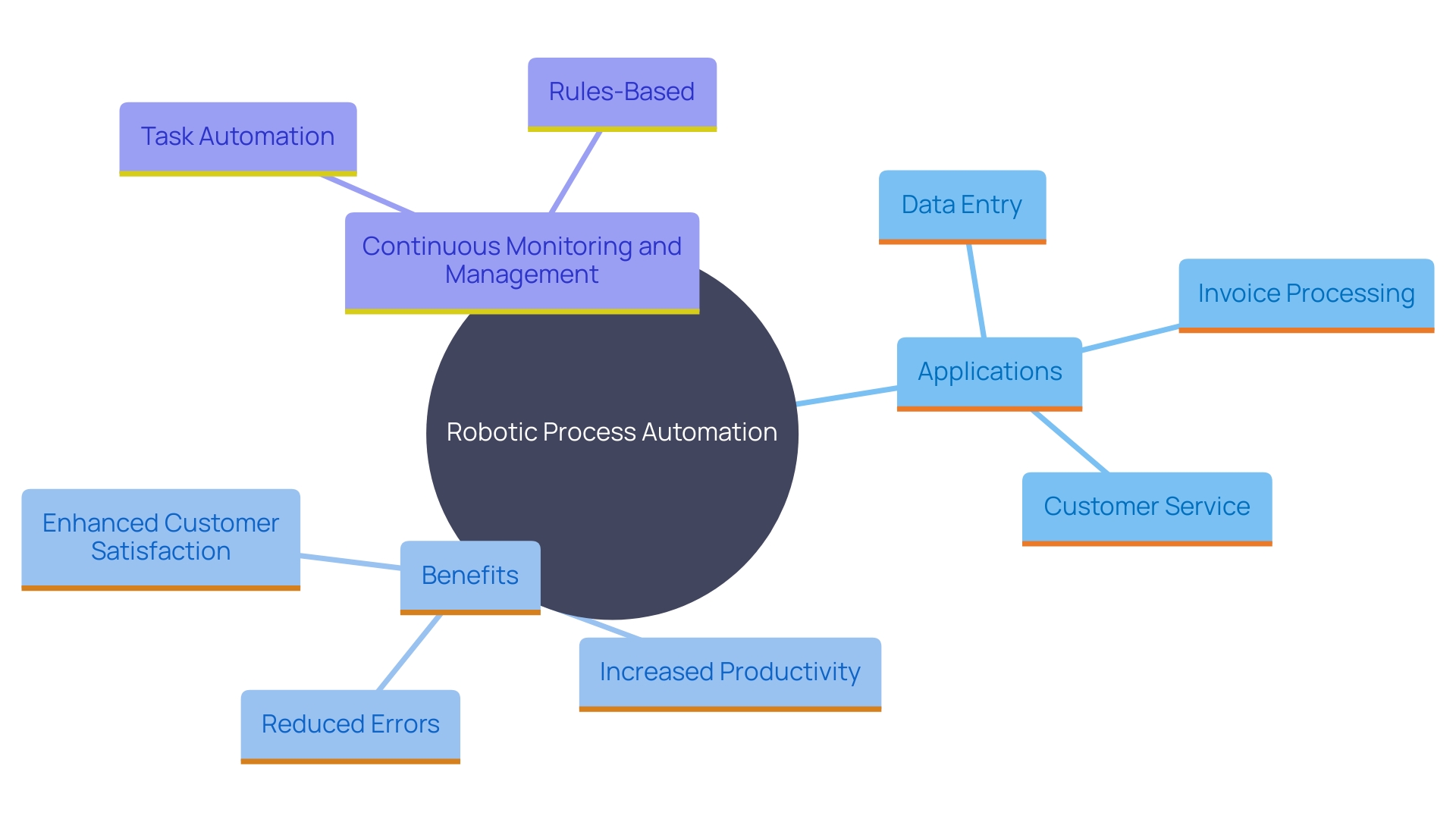
Key Benefits of RPA in Business Automation
Robotic Process Automation (RPA) revolutionizes operational efficiency by delivering unparalleled benefits. By automating repetitive tasks, RPA ensures increased accuracy, reducing errors to a minimum. The cost savings are significant, as mechanization reduces the dependence on extensive human resources. For instance, Louvre Hotels Group, through RobosizeME’s technology, saved a staggering 574 hours monthly on rate code maintenance alone. This exemplifies how RPA can significantly cut operational costs.
Speed is another crucial advantage; RPA enables tasks to be completed much faster than manual processes. This acceleration not only enhances productivity but also frees employees to focus on higher-value activities. When workers are relieved from mundane tasks, they can engage in innovative projects, boosting job satisfaction and fostering a culture of continuous improvement.
The transformative potential of RPA is evident in various sectors, from hospitality to manufacturing. Robotic Process Automation isn’t just a technological upgrade; it’s a strategic imperative that drives efficiency, innovation, and substantial ROI.
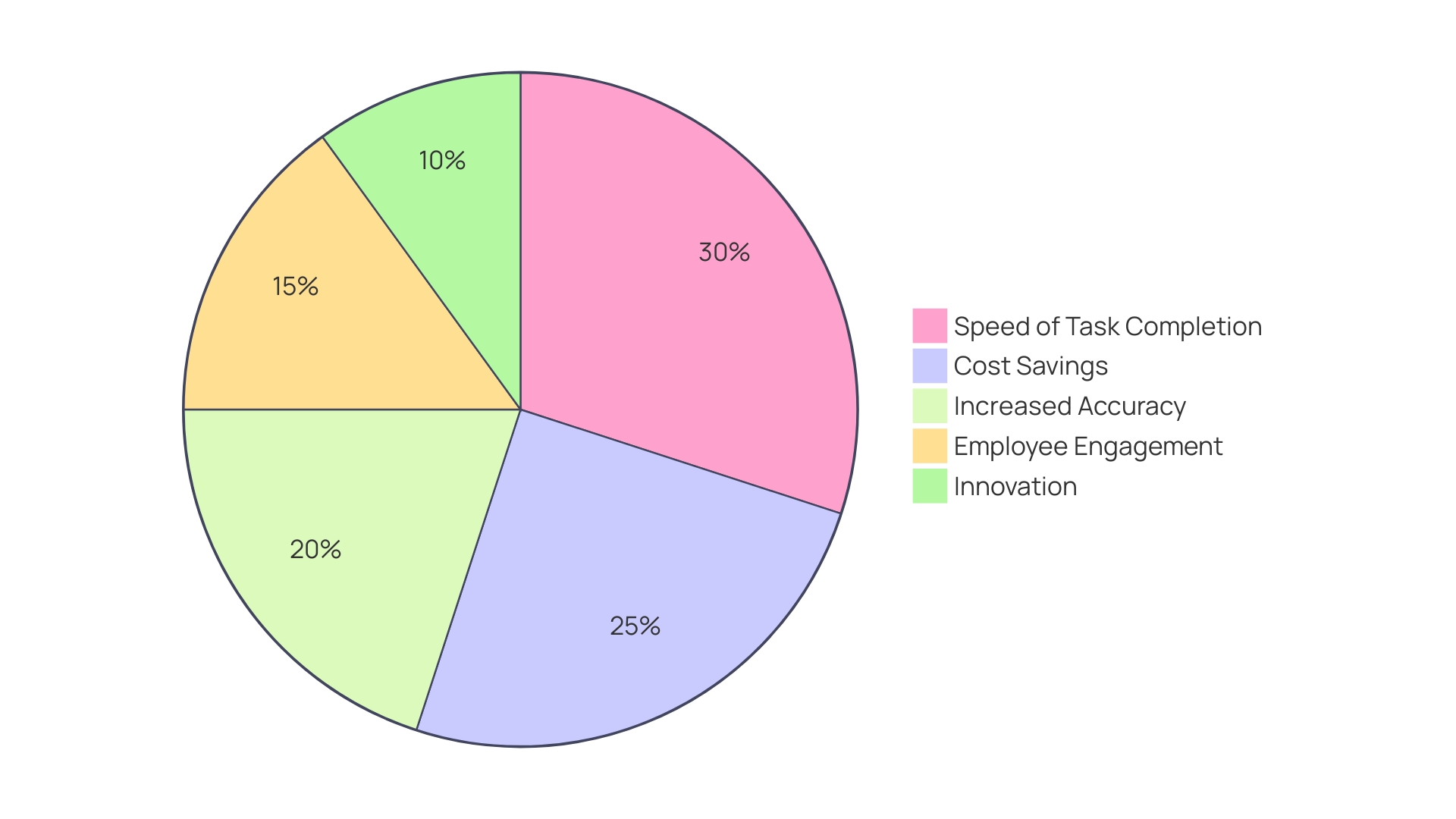
Applications of RPA Across Industries
RPA’s versatility spans across diverse sectors such as finance, healthcare, manufacturing, and retail, driving significant improvements in each industry. For instance, in the finance sector, RPA automates complex tasks like reconciliations and reporting, ensuring compliance and operational efficiency. A prime example is M&T Bank, which has leveraged RPA to enhance code quality standards, mitigating risks associated with security breaches and financial losses.
In healthcare, RPA streamlines patient data management and appointment scheduling, which is crucial for maintaining accurate records and providing timely care. The manufacturing industry benefits from RPA in inventory management and quality control processes, aiding in maintaining high standards and reducing errors. Retailers also harness RPA for order processing and customer service management, significantly improving operational efficiency and customer satisfaction.
The implementation of RPA across these industries exemplifies its broad applicability and transformative potential. As industries continue to adopt and refine RPA technologies, the benefits in terms of efficiency, compliance, and customer satisfaction are becoming increasingly evident.
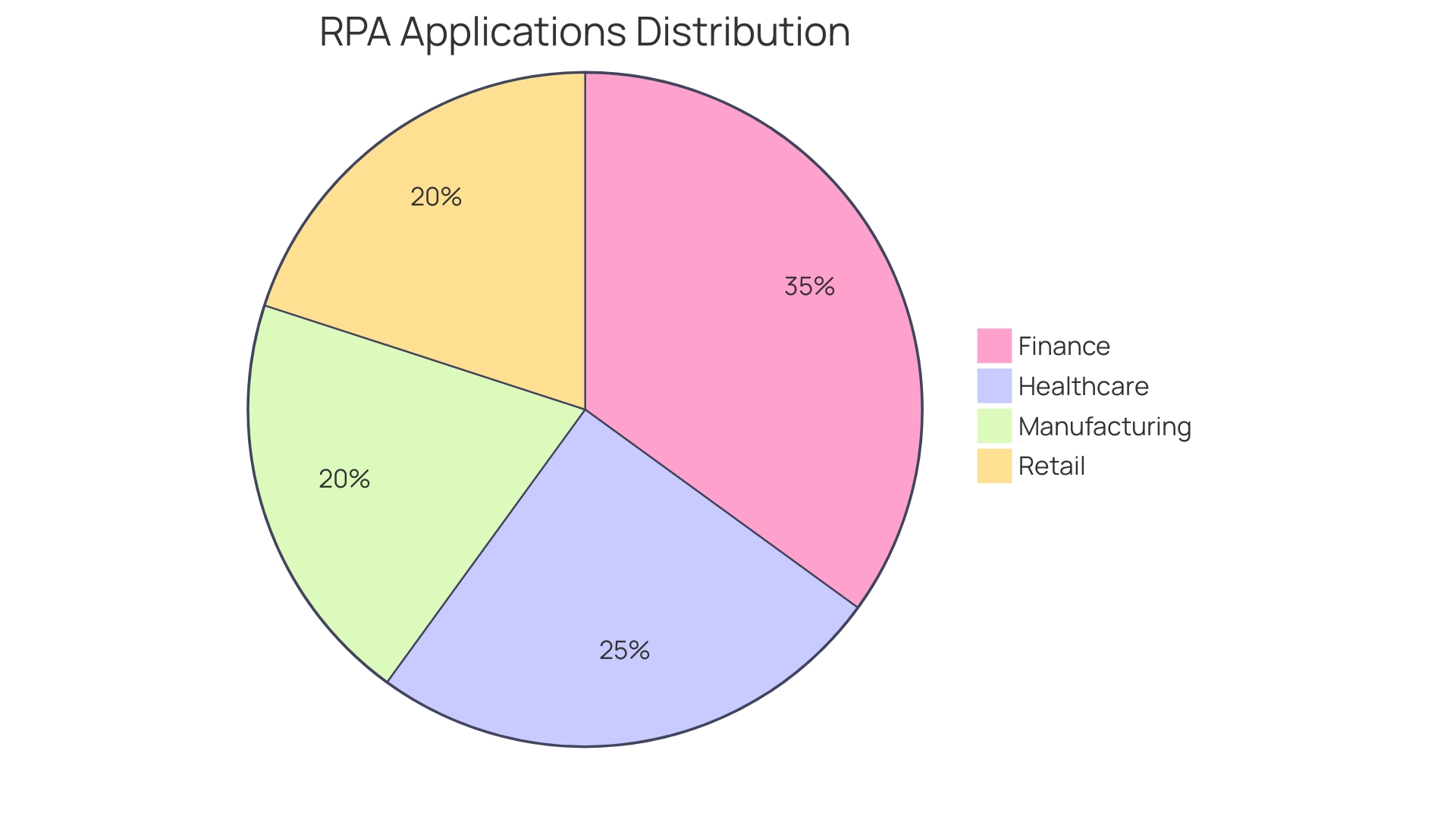
Challenges and Limitations of RPA Implementation
Implementing RPA comes with its own set of challenges, especially when it comes to employee resistance and process clarity. Employees often fear job displacement and can be hesitant to embrace new technologies. This resistance is not baseless, as AI and mechanization are significantly altering the workplace dynamics, presenting both opportunities and ethical challenges. As noted, ‘Comprehending AI and technology is dominating many industries, including AI and mechanization in today’s tech-driven world.’. Uniting mechanization with AI is a significant advancement that boosts creativity, productivity, and problem-solving abilities
Moreover, poorly defined processes can lead to ineffective automation, undermining the benefits of RPA. The journey towards successful RPA implementation involves three key steps: digitization, modernization, and transformation. Digitization, or electronic encapsulation, transforms current information and documents into an electronic format without modifying or examining it. Digitalization then uses this data to enhance processes, organizational structures, and decision-making architectures. Finally, digital transformation leverages these technologies to create additional value for the organization and its stakeholders.
To navigate these challenges, businesses must conduct thorough assessments of their workflows and ensure that they have the appropriate infrastructure and support systems in place. This approach not only maximizes the benefits of RPA but also aligns technological advancements with human roles and duties, fostering a harmonious and productive work environment.
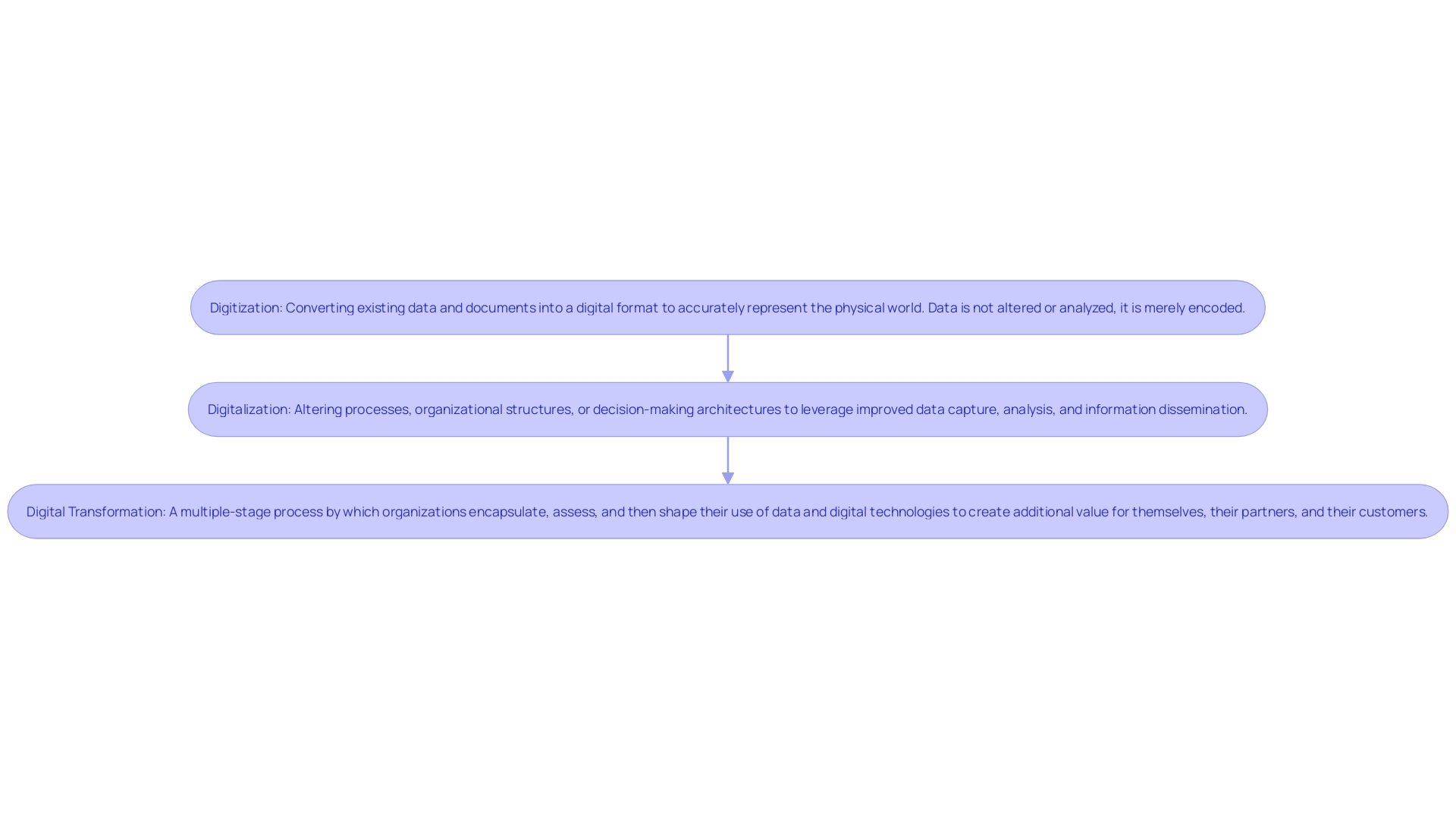
Future Trends in RPA and Business Process Automation
The future of RPA is encouraging, with trends suggesting a move towards intelligent processing, integrating RPA with artificial intelligence (AI) and machine learning. This evolution is poised to enable bots to handle more complex tasks, learn from data patterns, and provide deeper insights. As organizations increasingly acknowledge the importance of automation, RPA is anticipated to advance, becoming a crucial element of wider transformation strategies.
Technological transformation usually occurs in three successive stages: digitization, modernization, and transformation itself. Digitization, or electronic encapsulation, involves transforming current information and documents into electronic formats. The next phase, digitalization, utilizes this digitized information to change processes, organizational frameworks, and decision-making systems, enhancing information capture and analysis. Ultimately, digital transformation evaluates and redefines the application of information and digital technologies to generate extra value for organizations and their stakeholders.
A prime example of this transformation is Renault’s supply chain, which started its digitalization journey in 2017 by creating an information lake. By 2021, they had integrated 100% of their supply chain data into this system, dedicating 10% of their IT budget to data structuring. This foundation allowed them to develop a control tower connected to partners, enabling precise factory supply management.
Furthermore, the AI market, expected to reach a size of US$305.90 billion in 2024 with a growth rate of 15.83% annually, underscores the expanding integration of AI in various sectors. The combination of RPA and AI is transforming industries, placing technology at the center of end-to-end process execution and allowing humans to focus on high-value tasks.
By embedding AI capabilities into RPA, organizations can enhance their agility and responsiveness in the marketplace. This melding of technologies supports a more dynamic approach to operations, ensuring that companies remain competitive in an increasingly digital world.
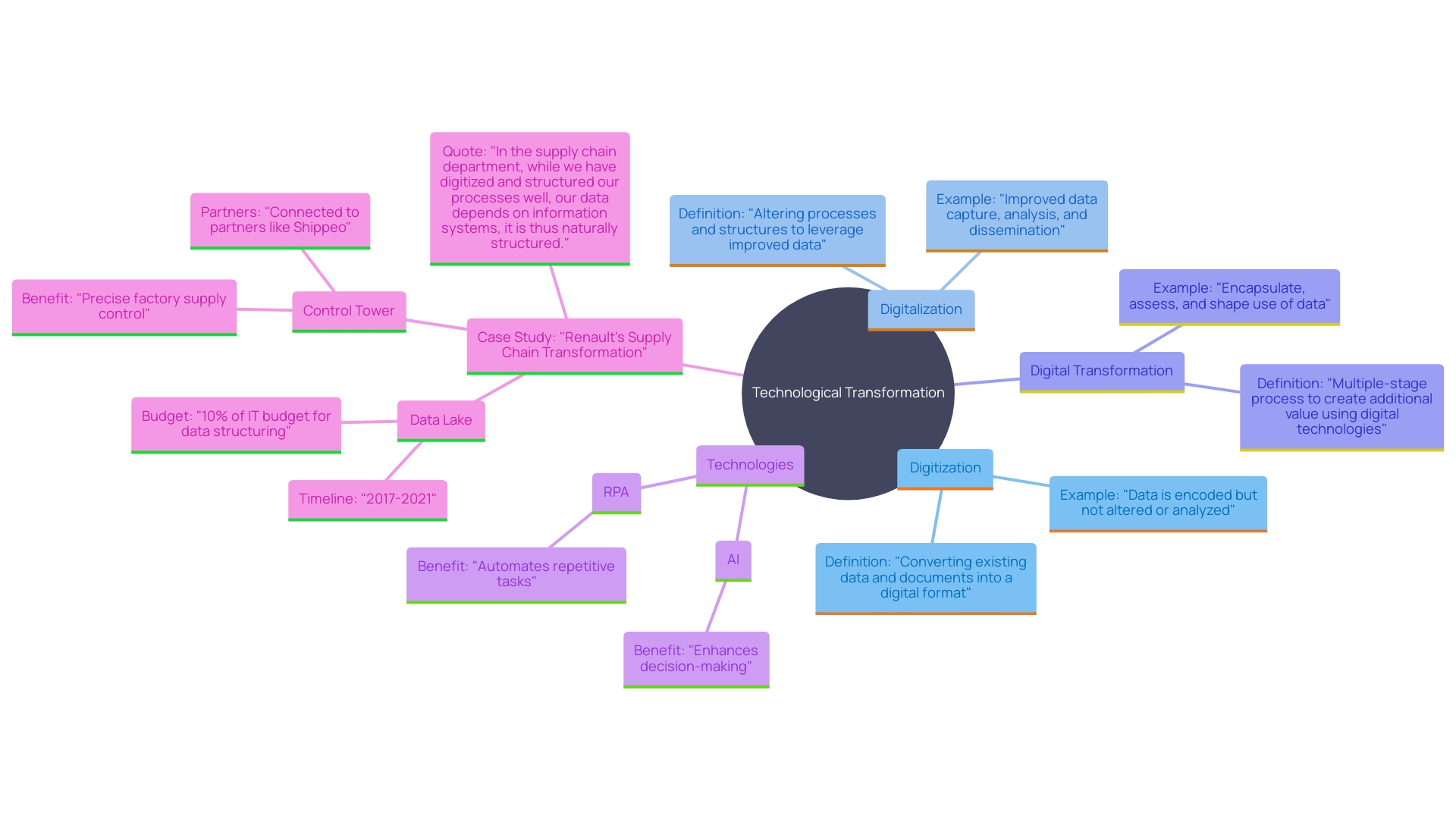
Conclusion
The transformative power of Robotic Process Automation (RPA) is evident across various sectors, showcasing its ability to streamline operations and enhance productivity. By automating repetitive, rule-based tasks, RPA not only minimizes errors but also significantly reduces operational costs. Organizations like Surrey County Council and Louvre Hotels Group exemplify how RPA can drive efficiency, allowing teams to focus on strategic initiatives that foster innovation and job satisfaction.
However, the journey to successful RPA implementation is not without challenges. Employee resistance and poorly defined processes can hinder progress, emphasizing the need for a well-structured approach to change management. By conducting thorough assessments of workflows and aligning technology with human roles, businesses can create a harmonious environment that maximizes the benefits of automation.
Looking ahead, the integration of RPA with artificial intelligence and machine learning presents exciting opportunities for organizations. This evolution towards intelligent automation will enable bots to tackle more complex tasks and provide deeper insights, further enhancing operational efficiency. As industries continue to embrace these advancements, the potential for RPA to drive digital transformation becomes increasingly clear, ensuring that businesses remain competitive in a rapidly evolving landscape.

